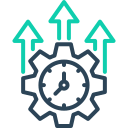Cloud Platforms and Collaboration That Accelerate Decisions
Adopt channels, threads, and shared documents so updates persist beyond meetings. Replace status syncs with dashboards, and reserve live time for alignment or problem solving. People gain quiet hours for deep work while leaders gain clarity without interrupting teams.
Cloud Platforms and Collaboration That Accelerate Decisions
Centralize documents, decisions, and FAQs with metadata and access controls. Add semantic search so employees find answers in seconds. Preventing duplicate effort is one of the fastest paths to efficiency, especially across complex, multi-disciplinary organizations operating under deadline pressure.







